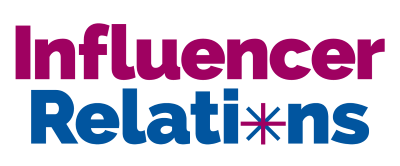 Awards for analyst relations team are a great idea: it’s hard for AR teams to have a useful model of excellence: awards give you an idea of whether you have reached it. However, existing awards programs focus on a small layer of mega-vendors and then to reward firm who do the most analyst relations, rather than those who do it well. At the AR Value Forum, we’ll introduce Circle awards, which pick out the best analyst relations teams from a larger group of around 50 major firms. Several firms will win the award including Huawei, whose Global AR lead Sarita Kincaid will speak at the Forum, NetApp and SapientRazorfish.
Awards for analyst relations team are a great idea: it’s hard for AR teams to have a useful model of excellence: awards give you an idea of whether you have reached it. However, existing awards programs focus on a small layer of mega-vendors and then to reward firm who do the most analyst relations, rather than those who do it well. At the AR Value Forum, we’ll introduce Circle awards, which pick out the best analyst relations teams from a larger group of around 50 major firms. Several firms will win the award including Huawei, whose Global AR lead Sarita Kincaid will speak at the Forum, NetApp and SapientRazorfish.
We think awards matter because they are powerful tools in a battle of ideas about what excellence looks like. A great example of that, in the wide corporate communications world, are the Cannes Lion awards. By putting creativity before business value, those awards serve to preserve the primacy of advertising-driven creative work in corporate communication. That is problematic because consistency and customer-orientation can be more important in delivering brand equity than creativity alone. Memorable ads are not always driving the right brand perception and, indeed, could sometimes work just as well with any brand in a field. Similarly, in the analyst relations field, our IDEAL model of AR excellence is based on the understanding that effective AR is about generating positive outcomes as well as having a good volume of communication.
Sadly, come of the most effective and impressive AR programs are not recognized by existing awards schemes. Because some awards focus on the volume of communication, rather than its quality or impact, large teams such as Cisco and IBM (which are certainly well above the average) appear to be the best analyst relations teams. In fact, although they are the largest, the Analyst Attitude Survey shows that they are not always the very best. According to the hundreds of analysts who take the AR survey there are better AR teams which accomplish a better balance between the communications goals and winning the confidence of analysts.
The Analyst Attitude Survey gives us a stable platform for an awards program that will be more nuanced and will give more opportunities for the AR community to recognize that AR excellence is not simply about large scale [something which few teams can attain] but is about the right ideas about market innovation and a positive communication style to make analysts confident in your firm.
The lessons from the Analyst Attitude Survey hold true for individuals as well as for teams. Our survey is focussed on the 50 or so firms that concern the most analysts, simply because those are ones where we get the most data and can thus be the most confident. In a series of AAS webinars organized for those firms over the last few months we have discussed the way that the Circle process could be turned into an accreditation program next year. That would certainly be of value to small teams and firms with just one AR person because we can use the most successful teams as a model for the others.
To join the discussion, please join us at the AR Value Forum.


[…] of the biggest surprises from the Analyst Attitude Survey, which produces the data for our KeaCircle awards, is that many AR spokespeople are missing out on a surprising element of pitching to […]
[…] biggest surprise of last week’s Analyst Relations Value Forum was Huawei winning one of the KeaCircle awards given to several leading-edge analyst relations teams. Recommendations from industry analyst […]